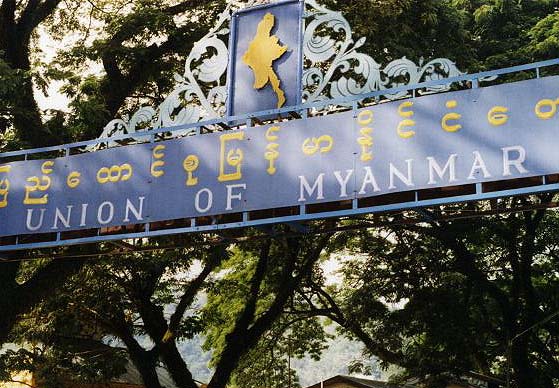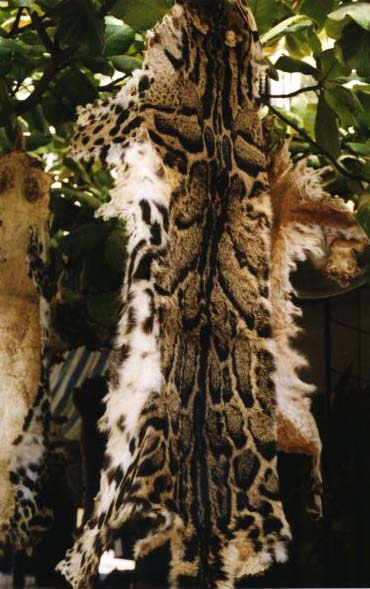
Opium Scales and Tiger Skins
 |
| Thai Hilltribe girl, Mae Sai |
The city of Chiang Rai (pronounced "chang rye") lies in the northernmost reaches of Thailand. In the late 13th century, King Mengrai deemed Chiang Rai as his royal HQ, but
the king moved south after a few decades. In the 15th century, lightning struck a local stupa and revealed the sacred Emerald Buddha statue. But it was quickly spirited away to be housed in the wats
and revealed the sacred Emerald Buddha statue. But it was quickly spirited away to be housed in the wats of more powerful cities. Today, Chiang Rai is still the neglected "second son." Outshined by the glowing lights of Chiang Mai to the south and overshadowed by the opium fields of the Golden Triangle to the north, Chiang Rai is more important for what it is near than for what it is. The Burmese border is just a bus ride away. The surrounding territories are populated by hill tribes and well traveled by tourists. Hired boats speed up the Kok River and out of town. For most travelers, Chiang Rai is more of a diving board than a destination.
of more powerful cities. Today, Chiang Rai is still the neglected "second son." Outshined by the glowing lights of Chiang Mai to the south and overshadowed by the opium fields of the Golden Triangle to the north, Chiang Rai is more important for what it is near than for what it is. The Burmese border is just a bus ride away. The surrounding territories are populated by hill tribes and well traveled by tourists. Hired boats speed up the Kok River and out of town. For most travelers, Chiang Rai is more of a diving board than a destination.
By the time we pulled into the Chiang Rai Bus Station, it was already late in the evening. We hailed a tuk-tuk and ended up at the Mae Hong Son Guest House. This was one of those places for hardened backpackers: people who think sleeping on a bed - any bed - is extravagant. The room contained your basic two beds and a doormat. A laminated sign hung on the wall warning guests not to "bring prostitutes." What can I say, it only cost $2 a night. Exhausted from our day on the road, I spread out my arms and fell backwards onto the rock-solid bed. After a day of songthaew,
and ended up at the Mae Hong Son Guest House. This was one of those places for hardened backpackers: people who think sleeping on a bed - any bed - is extravagant. The room contained your basic two beds and a doormat. A laminated sign hung on the wall warning guests not to "bring prostitutes." What can I say, it only cost $2 a night. Exhausted from our day on the road, I spread out my arms and fell backwards onto the rock-solid bed. After a day of songthaew, longboat, speedboat, tuk-tuk, longboat, samlor,
longboat, speedboat, tuk-tuk, longboat, samlor, bus, tuk-tuk, I was asleep before I closed my eyes.
bus, tuk-tuk, I was asleep before I closed my eyes.
The next morning we ate breakfast in the hotel's bamboo garden. At the next table, a trio of American backpackers furiously scratched their mosquito-bitten legs. One of them leaned over and struck up a conversation with us. He and his friends had spent the last two days on a hill tribe trek. They even spent the night in a local village. The guy whipped out a stack of pictures and paged through them lovingly, telling us the names of everyone in each shot. The pictures were strangely unsettling. In one shot, a group of beaming tourists stood around an elderly tribes woman who had a sort of haunted look on her face - an expression the photographer didn't seem to notice.
After breakfast we checked out, opting for a more mid-scale hotel - The Golden Triangle Inn. Air conditioning, a nice restaurant, a comfortable bed and best of all, an attached bathroom with toilet paper, all for $15 a night. Never take a good bathroom for granted. We unloaded our backpacks, took in the air-con, then headed out to explore the city.
Exploring Chiang Rai is no long expedition. A huge Sony sign beckons from above an electronics shop. A cherub statue, painted florescent yellow, stands in the doorway of an appliance store. Loud music blares from music shops. The streets are lined with pharmacies and camera stores. During the Cold War when the West was worried that the Domino Theory would crush Southeast Asia, they really had nothing to worry about. As long as Thailand remains Thailand, capitalism will have a foothold in Asia.
We soon found ourselves heading for one of Chiang Rai's more popular sites, the bus station. Two hours later, we stepped off at Mae Sae, near the Burmese border. Actually, we got off too early because we thought we had to have our passports stamped at the tourist office a couple miles from the border. The office was closed for lunch, so we decided to check out the Inter-Suki restaurant across the street. It's a Japanese fast food chain, very popular in Thailand (although this particular one was pretty dead). The waitresses were all dressed in 1950's diner uniforms, complete with little aprons and kerchiefs - kind of like Flo on the sitcom Alice, only baby blue instead of pink. We ordered two Pepsis with no ice. The waitress tilted her head and raised both eyebrows. "That's all?" We nodded. She shrugged, smiled and walked off to get our order. There were no other customers, so the wait staff didn't have much to do. Either they never get Western tourists, they were very bored, or they were fascinated that we'd come all the way to the Burmese border to order Pepsi without ice, but they spent the next twenty minutes staring at us. It was very strange. At one o'clock, the tourist office opened up again. We went through an obstacle course of tasks with them (signatures, photocopies across the street), then finally, we made our way to the border between Thailand and Burma.
 |
| Myanmar border crossing |
Snow leopard skins hung on street corners next to plastic toy guns and Nintendo sets. Piles of peacock feather fans sat on wooden carts. Hilltribe people sold flowers. Buddha statues, Cambodian police jackets, even full tiger skins were up for the bargaining. Snow leopards and tigers are highly endangered animals, and it was pretty disheartening to see their skins hanging there like bellbottoms at a garage sale.
 |
| Snow leopard skin, Thakhilek market |
That night we wandered the streets of Chiang Rai, then stopped for dinner at a little hole-in-the-wall restaurant. The entire front wall was rolled up like a raised garage door, so we could watch the street from our table. Just as we were setting down our chop sticks and figuring out the bill, an elephant walked by. It pulled over just outside the restaurant, so when we walked out, it was standing there, between two parked cars. I stood right next to it, close enough to see its long, sweeping eyelashes and rough skin.
A few streets down on Phahonyothin Road, we found the Chiang Rai night market. Under strings of colored lights, Thai merchants sold their crafts. Hilltribe women sat along the sidewalk with sequined caps, tribal hats, opium scales, wooden carvings, green Buddhas. One elderly woman handed Andy a small black box. He opened it, only to find another box, then another, then another. Deep inside, Andy found the sappy dark resin of opium wrapped in aluminum foil. After confirming it was opium he said "no thank you" in Thai and handed the box back to her. I bought a blanket from a Mien (or Yao) tribesman. The New Yorker we met in Luang Prabang said whatever price they offer, don't settle for any more than half. That's hard to do when you're talking to the artist who made whatever it is that you are trying to haggle over. Besides, a couple bucks means more to them than it does to us.
I loved the Chiang Rai night market... dozens of merchants in their traditional dress, colorful blankets, hand made treasures... all under the dim strands of colored lights. The night market in Chiang Mai is much more famous, but this one is more intimate, less organized, more traditional.
The next morning we caught the 11AM bus heading southwest, and after three and a half hours, we arrived in Chiang Mai.
 |
 |
 |
|
previous journal |
journal index |
next journal |